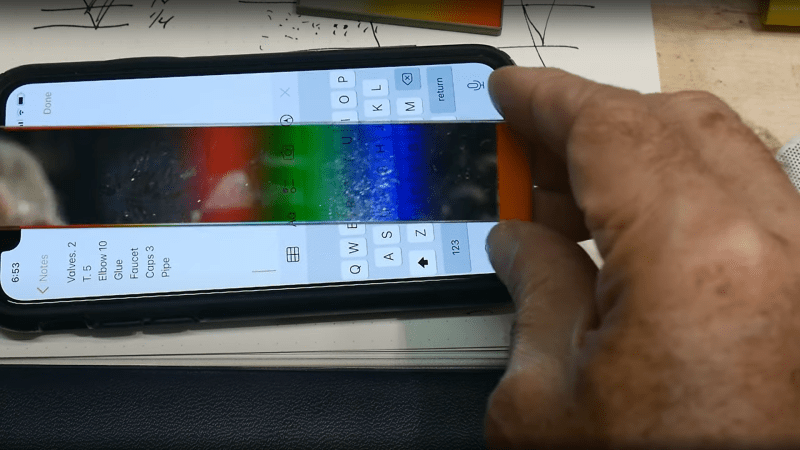[IMSAI Guy] presents for your viewing pleasure, a nice video on the topic of optical filters and mirrors. (Video, embedded below) The first optical device is a simple absorption filter, where incoming light is absorbed in a wavelength-selective manner. Much more interesting however is the subject of interference or dichroic filters. These devices are constructed from many thin layers of a partially reflective material, and operate on the principle of interference. This means that photons hitting the filter stack will interfere either constructively or destructively giving the filter a pass or stop response for a particular wavelength.
As [IMSAI Guy] demonstrates, this makes the filters direction-specific, as photons hitting the stack at a different angle will travel slightly further. Longer travel means the interference effect will be different, and so will the filtering response. You can see this by playing around with one in your hands and seeing the color change as your rotate it. Dichroic filter films can also make for some stunning optical effects. Very cool stuff.
By creating a filter stack with a wide enough range of inter-layer thicknesses, it’s possible to construct a mirror that covers the full spectrum with excellent reflectivity. Since you can tune the layers, you can make it reflect any range of wavelengths you like. One thing we’ve not seen before is a wedge-like optical filter device, where the layer thicknesses progressively increase lengthways, creating a variable optical frequency response along the length. We guess this would be useful for diagnostics in the field, or perhaps for manually tuning a beam path?
We like the applications for dichroic films – here’s an Infinity Mirror ‘Hypercrystal’. If you don’t want to buy off-the-shelf films, perhaps you could sputter yourself something pretty?















Before RGBAWXYZ leds were a thing, Dichroic filters were used quite a bit in stage lighting. A company called Vari Lite invented a color fading fixture that used a stack of dichroic vanes that would tilt in and out of the beam to alter the color. Revolutionary at the time.
https://patents.google.com/patent/US5073847A
Once was involved in developing a dichroic based black light fixture. It was incredibly more efficient than the standard Shott glass filter, but we could only get a small beam angle out of it before the color rolled off into visible wave lengths.
There are now many stage fixtures that use a white LED engine (I assume phosphorus doped blue LEDs) with 3 or more sets dichroic degradee (half toned) patterned vanes that allow precise subtractive dialing in of colors. Much debate still of what and why is better – white (not fully continuous spectrum) LED with subtractive filtering……or multiple narrow wave length emiters (RGBAWXYZ…and soon to be RGBAWXYZR’G’B’A’W’X’Y’Z’)
….)
The strange properties of the natural world will never cease to amaze me.
What was old is new again.. The same technology can be found in the colors of a butterfly wing.
instead of the proposed variable-thickness film, an etalon can be used. which is apparently two mirrors a variable (but small) distance from eachother, i guess almost the same principle.
Used in mineralogy.
https://www.olympus-lifescience.com/en/microscope-resource/primer/techniques/polarized/quartzwedge/
Are there any good pointers for making our own dichroic filters?
I’m thinking of a band stop filter for infrared.